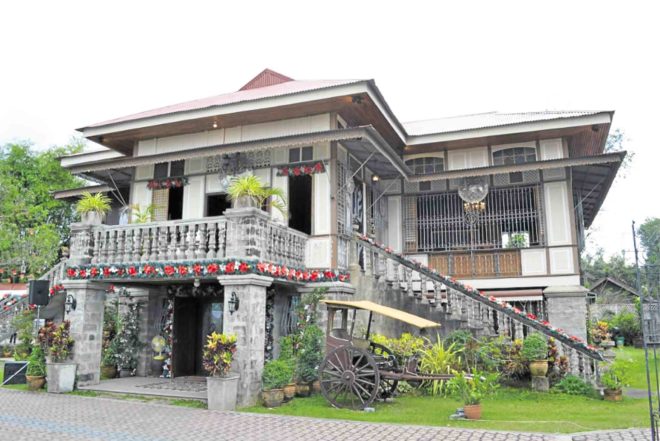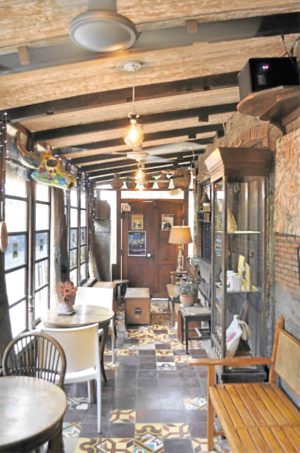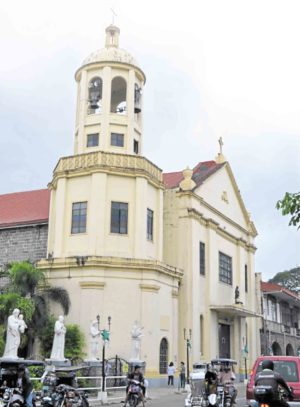

For two decades now, a group of heritage warriors in Pulilan, Bulacan, has been actively preserving and promoting the town’s heritage assets in a number of which date back to the Spanish colonial period.
This movement was started in 1997 when arts and historical society Jefarca reused a section of the convent of the town church and converted it into the Museo San Ysidro de Pulilan, showcasing the town’s civic and church heritage starting from its establishment as an independent pueblo in the late 18th century.
Since then, a number of heritage structures have been saved and restored through the efforts of the group, the local government, church and residents.
Restored are the Casanova-Aguirre house built in 1927; Casa Balbina (1910); Casa San Francisco or the Laxamana house (1929); Adriano Salvador house (1900s); and Santos-Cabral house (1935), Andrew de Guzman of Jefarca said.
(Jefarca is from the initials of the names of the founders of the group. Aside from Andrew de Guzman, they are Joy, Edison, Frederick, (Andrew), Roderick, Christopher, Avelino, Arsenio.)
Jefarca is trying to maintain the Hilario Esguerra house (1852) to prevent its further deterioration, De Guzman said.
The old municipal building (1957) has likewise been restored together with the 1908 Gabaldon-type Pulilan School and the 1928 Marcelo H. del Pilar Monument, De Guzman said.
The 1925 Rizal Monument is scheduled to be restored next year, he said.
These conservation works were undertaken from 2007 to the present with the target to restore all heritage houses in 2020.
Sustainable development
Aside from preserving its built patrimony, the group also aims to complete 10 museums in Pulilan (so far, there are five), and set up the Quingua river cruise and public art installations. It also hopes to increase the number of farms in the town eroded by commercialization in the past years.

De Guzman, who also owns the heritage-themed Café Pulilan, said the projects would foster among the townspeople a solid and meaningful heritage-based sustainable development.
“These are important because these are the wellspring of our love to our town and country and these continuously remind us how courageous Filipinos are, the important ingredients to a sustainable development,” De Guzman said.
“If everybody acts, protects and contributes to the development of their respective towns, we will accomplish our goal of a culturally developed country.”
Issues
Although there were gains from its heritage protection and preservation cause, there were also losses such as the 19th century San Pedro house in Longos village, which was demolished in 2007, and the Manuel Calderon house demolished in 2008.
Also, the town’s Gabaldon-type Pulilan Central School building was demolished in 2002.

The town’s church also did not escape alterations as its interior was renovated in 2013.
Fr. Leo de Jesus II, the parish priest, then installed altar pieces incorporating “in bad taste” the 1960s main retablo to the newer one and elevated the flooring, covering in the process the old baldosa tiles, Jefarca said.
Jefarca’s opposition was not heeded by the priest then, but De Guzman said that the new parish priest, Fr. Mar Ladra, was very considerate and returned the old tiles on the center nave.
Old cemeteries
In all, there are over 30 heritage structures in the town located mostly in the Dampol and Poblacion areas with the church serving as the centerpiece.
But what piques interest is its late 18th-century cemetery directly located beside the church.
Pulilan’s cemetery is one of at least five cemeteries in the province that are located on the church compound, meaning their church officials did not heed an order by Spanish authorities in the mid-19th century to transfer cemeteries at least a kilometer away from churches due to sanitary reasons.
Cemeteries prior to that order are normally located on either the Gospel and Epistle sides as well as the back of the church.
Other Bulacan churches which have retained their cemeteries to this day at the vicinity of the church are Meycauayan, Marilao, Calumpit, Obando and Bulakan.
Unique
Pulilan’s cemetery still has its perimeter walls made from adobe and an interesting three-level stone and brick gate topped by an arched pediment. It has niches normally reserved for priests or prominent individuals.

However, what makes it unique is the second level which if seen from the front, may just look like an ordinary part but is actually a niche that can be reached through a flight of stairs on the side.
A grave marker dated 1968 indicates the last one interred is Don Catalino Castillo, a member of one of the prominent families of the town.
This unique feature of the cemetery gate is the only one of its kind in the country.
Aside from these, the cemetery also has two stately Art Deco graves of the Cruz and Calderon families located near the apse of the church.
The church apse likewise has an interesting feature —pockmarks or bullet holes from the skirmishes between government forces and Hukbalahap guerrillas in 1945 to 1948. –CONTRIBUTED














































